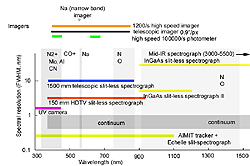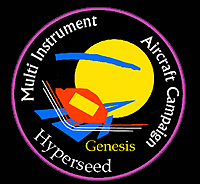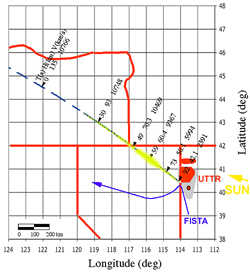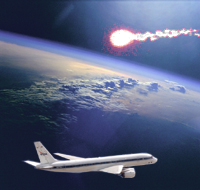Mission statement
The Hypervelocity Entry of a Sample Return Capsule is a real-life test of key risk drivers for future TPS design: amount of radiative heat flux and response of TPS.
Why is Stardust entry unique
The Stardust entry is the fastest reentry in NASA history.
Stardust arrives from interplanetary space at a high super-orbital speed of 12.8 kilometers per second (at 125 km). Genesis arrived at only 10.8 km/s at 125 km.
It is the first reentry with significant radiative component to the heat flux (estimated to be about 10 -15 percent). Genesis was only 2-5 percent. Stardust deploys an ablative heat shield (low density Phenol Impregnated Carbon), which has never been flown before. This is a possible future material for crew return vehicles.
Questions to be answered
How much of the surface heating is due to the radiation generated in the shock? Are the surface temperature predictions correct? What are the physical conditions in the shock wave? How does the ablation rate vary during descent? Are solid debris or atoms created that can heat the back shield? Did the Sample Return Capsule perform nominaly? What happened if something goes wrong?
 Outline of wavelength and spectral resolution coverage of instruments
Outline of wavelength and spectral resolution coverage of instruments
Predicted radiation signatures
The emission is dominated by the red-hot glow of the surface that covers all wavelengths, but peaks in the near-IR. On top of that background blackbody continuum, there are emission bands and lines from the air plasma shock and from the ablated material. Those include bands of N2+, CN, CO, C3, and N2, and lines of Oxygen, Nitrogen, Carbon. Their relative intensity varies during descent.
More: Research paper
Data requirements dictate Multi-Instrument format
Data need wide wavelength coverage, high spectral resolution, large range in brightness, target key radiation signatures, high temporal resolution, and highest possible spatial resolution. The mission will utilize the instrumental expertise gathered during the Leonid Multi-Instrument Aircraft Campaigns that studied smaller meteoroids, too small to form a shock wave.

Instrument layout on DC-8 Airborne platform
NASA DC-8 Airborne Laboratory
NASA's DC-8 Airborne laboratory has the capability to accomodate a wide array of instruments and guarantees clear weather conditions (nearly free of water vapor) at the time of the reentry.
 HYPERSEED MAC
HYPERSEED MAC
Stands for HYPERvelocity reentry simulation of the exogenous SEEDing of organic matter by asteroids; MAC = Multi-instrument Aircraft Campaign.
HYPERSEED MAC provides a group of scientists the best possible observing conditions to study the Sample Return Capsule entries of Genesis and Stardust for clues about carbon ablation and shock chemistry in the atmospheric impact of natural meter-sized asteroids, and to get engineering data on the performance of Thermal Protection System materials under actual working conditions.

Flight path
The flight will depart from NASA Ames in the early morning of January 15, fly to a "race track" orbit just south-west of the U.T.T.R. restricted air space and observe the SRC Entry while it approaches U.T.T.R.
Time line
A preliminary time line towards a Stardust SRC Entry Observing Campaign is given here.













